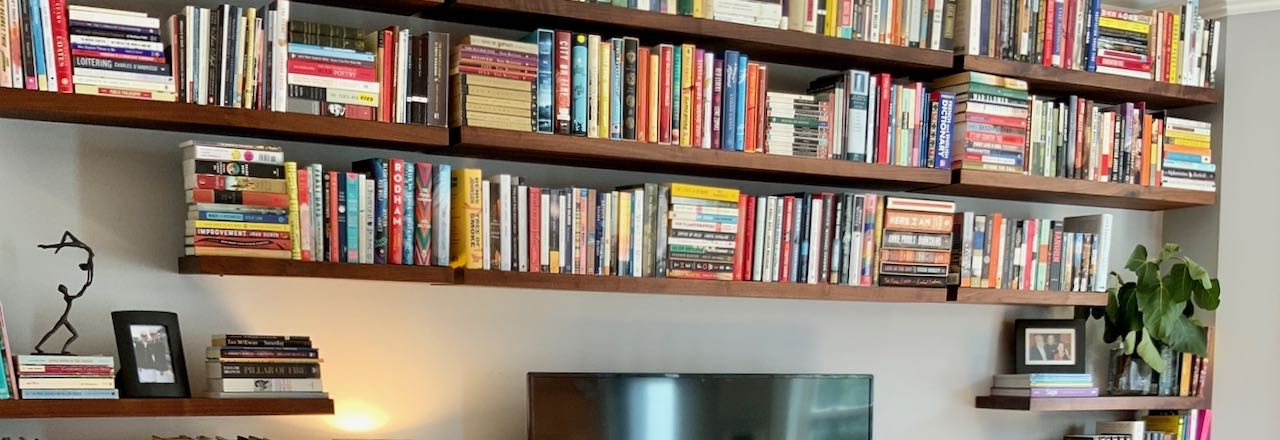
Massive Wall of Floating Bookshelves — How To Install
How we transformed a living room with a wall of bookshelves — as in floating bookshelves. Over 56 linear feet of wall mounted bookshelves with no exposed brackets!
Are you a book lover too? Do you dream of a room with floor to ceiling books, but in a fresh contemporary style?
Yes? and Yes? Good, then you’re in the right place, whether you have space for floor to ceiling books, or just a small corner . . . for now.
I have a process to share with amazing results.
All done by two confident, but totally novice shelf installers with minimal tools.
A bit of background:
Our daughter and our new son planned a small isolated pandemic wedding for Thanksgiving weekend 2020. We all know the story of the rising Covid rates with no vaccines yet. They decided they couldn’t risk our health and rescheduled for Thanksgiving 2021. You can see the Friendsgiving Rehearsal Dinner here and all the special touches they built into the wedding here.
In the meantime they found the perfect historic rowhouse in DC.
Well, almost perfect — it just needed an injection of their personalities!
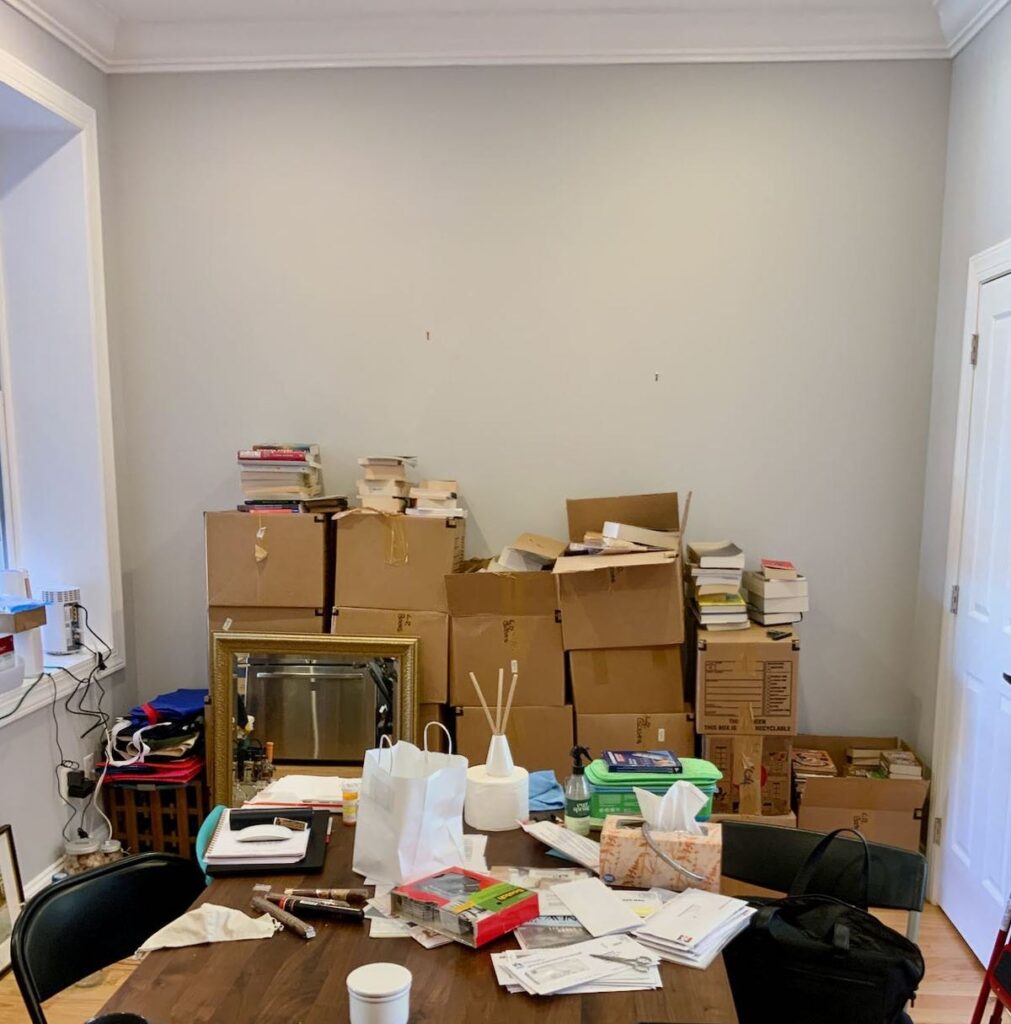
We, Hubs and I, drove out in April to begin said injection.
This was their dining room about 4 weeks after moving in, the day we arrived.
All those boxes? Books, and more books! And that is maybe a third of them.
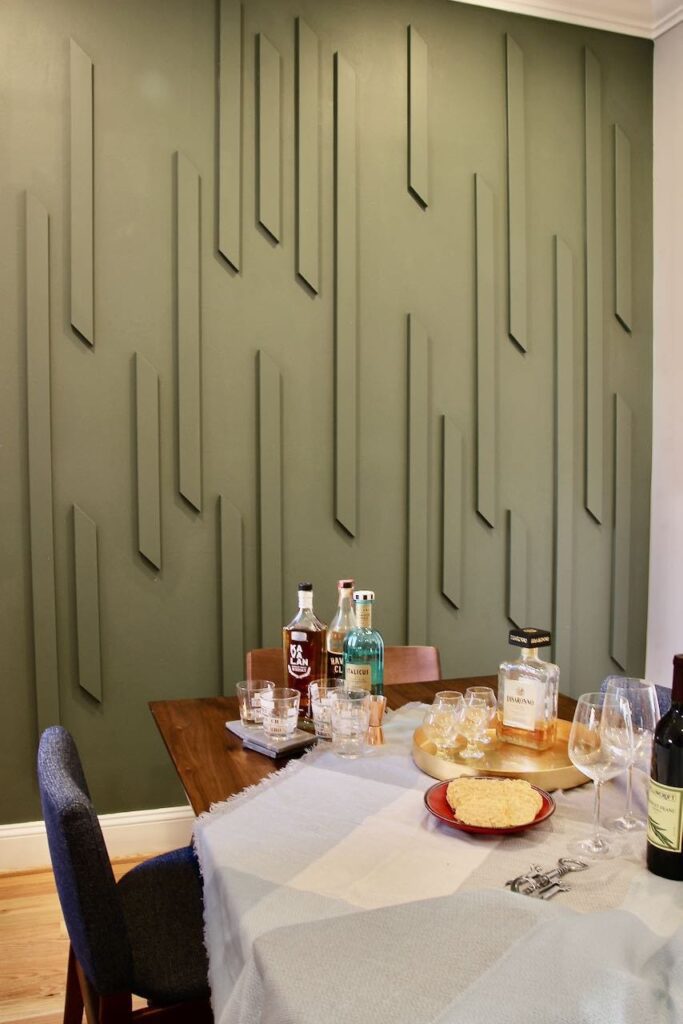
That trip, we installed and painted this dining room wall. You can read about this feature wall here.
At the same time, we began work on their living room wall and that mountain of books.
More Backstory:
Jon is Jewish, so not only do we have a wonderful new son, but also exposure to some wonderful new-to-us ancient traditions, modernized for their lives together.
One of these is a Ketubbah. Here is a lovely explanation of its origin and modern interpretation.
In general, Katie & Jon explained it’s a contract/promise between them. It’s their shared vision of what they aspire their married life to be.
More on their ketubbah in the Wedsgiving post. But in their Ketubbah they promised ” . . . our home will be filled with music, laughter, and towering piles of books . . .”
Yep, for these two, books rank right up there with music and laughter!
Before-
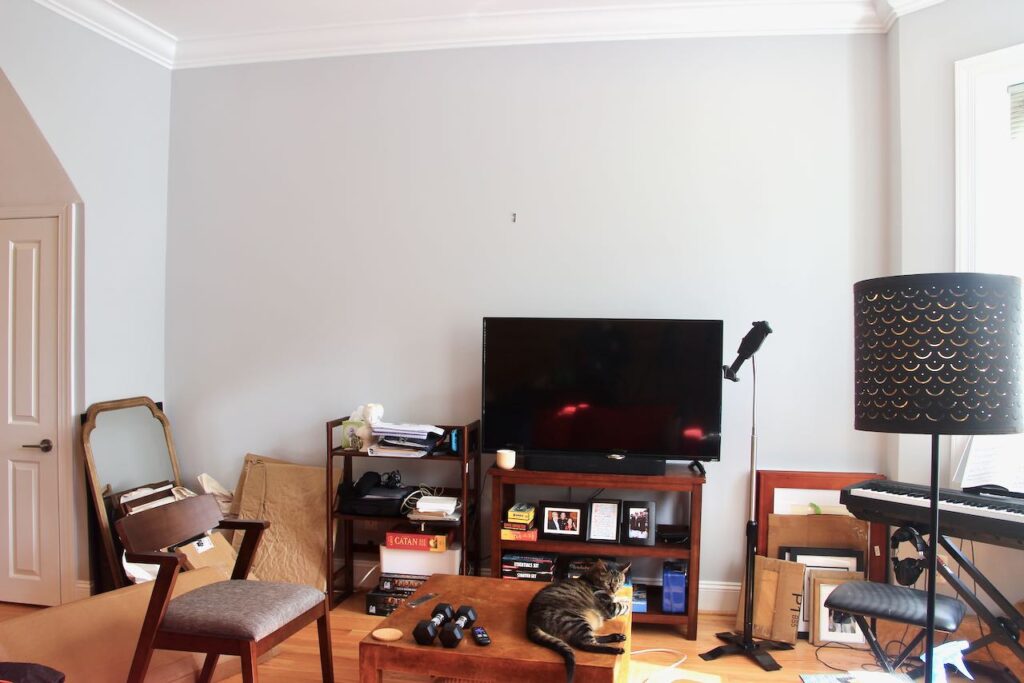
This is how the living room looked the day we arrived.
So much potential! But . . . so much work ahead.
The day their offer on their home was accepted, they sent me a walkthrough video and measurements, asking if we could turn this wall into a library wall.
Well, more like a bookshelf wall because it needed to include the TV and a bit of closed storage space.
“Oh, and we really don’t want a lot of heavy woodwork, nothing like traditional built-in’s”.
WHAT? Yes, they wanted wall mounted bookshelves of some kind. They found a few pictures. Nothing that really had it all.
After a week of back and forth, they determined that they liked the floating look. They wanted a floating bookshelf. LOTS of floating book shelves. Oh, and not a box style floating shelf (too thick),
They wanted solid wood slab floating shelves. Oh, and NO shelf brackets or mounting brackets showing. In other words, no sign of visible support.
They were not going to make this easy on me, were they?
The Hunt Began for Floating Bookshelves-
It didn’t take long to realize we needed custom.
We needed Etsy!!!
You’re thinking Etsy? Isn’t that the crafting marketplace? Yep, but all variety of crafting and at all levels.
Check out this assortment of possibilities! Amazing, right?
The third seller I contacted, JThomasHomeGoods, was a perfect fit for this huge book storage project!
Josh was great to work with, beautiful product, reasonably priced and located on the SW side of Kansas City, just about 30 minutes from us! Kinda crazy, right?
I was hoping to find someone more or less on the route from KC to DC, that we could stop and pick them up on our way. This was so much better! I never thought I find a craftsman making exactly what they wanted in the KC area!
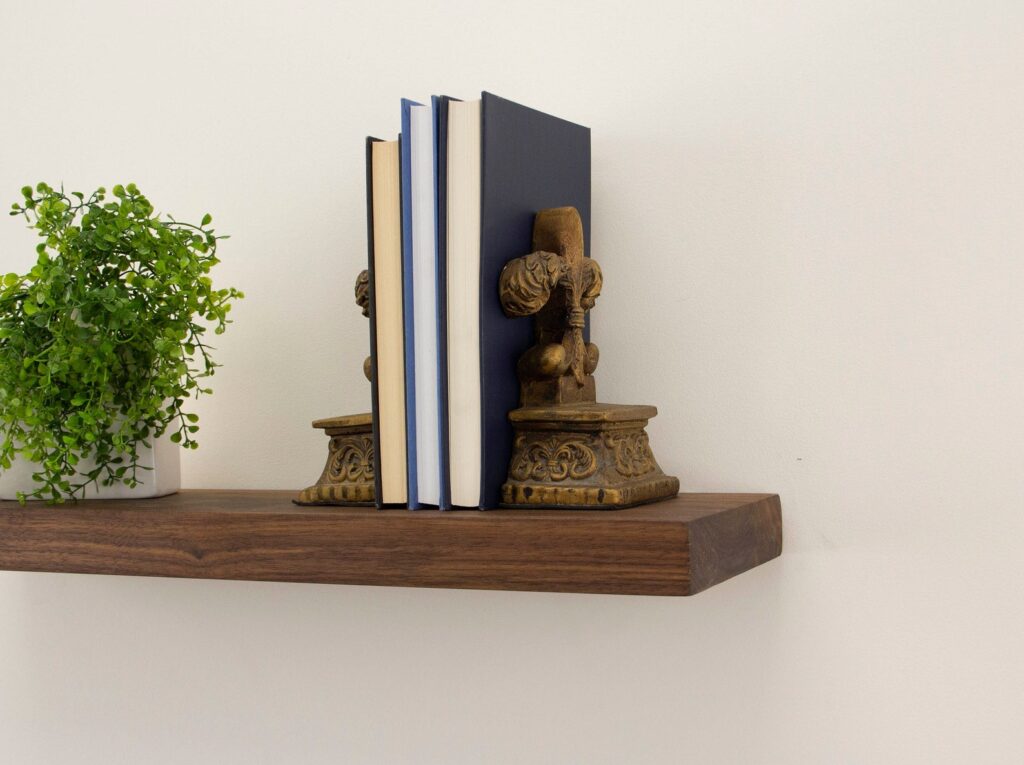
Josh offered many different options. The agonized over the type of wood. But ultimately these walnut shelves were the winners!
Now For the Lay Out of the Floating Book Shelves –
Hello, Canva, my friend!
If you don’t use Canva, well, why the heck not?
It’s easy to use and free. Yes, I have a paid version which is worth it for the daily workout I give it. But if you just need it here and there, the free version should serve you well.

Katie had found the Ivar pine cabinets at IKEA and thought they’d be the perfect size and perfect solution for floating closed storage with a walnut countertop also from JThomasHomeGoods.
I sent K+J, a file with twelve proposed versions (created in Canva) of how the shelves could layout and still have some closed storage.
Now the question was three or four of the double door Ivar’s? The winner, three.
Then, of the options with three double door cabinets, which will they choose? They chose option 8 of the twelve we started with. Personally, I think the cat and the banana bookend sealed the deal.
We double and triple checked all the measurements and placed the order with J Thomas Home Goods.
A couple of weeks later, we were vaxxed and the shelves were ready. Josh and his crew loaded all the shelves and hardware in our Highlander and strapped the countertop on the rooftop luggage rack. We were off the next morning to DC.
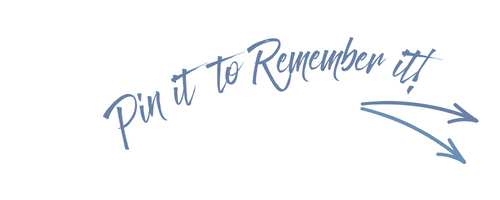
I know this is probably not the project top of mind for you at this moment.
I get that.
But maybe for when the time does come, save it to your
Floating Shelves Board
or Book Shelf Board
or Home Library Board
or Organizing Board
or Book Lover Board
Wall Shelves Board
Pin it wherever it makes sense to you.
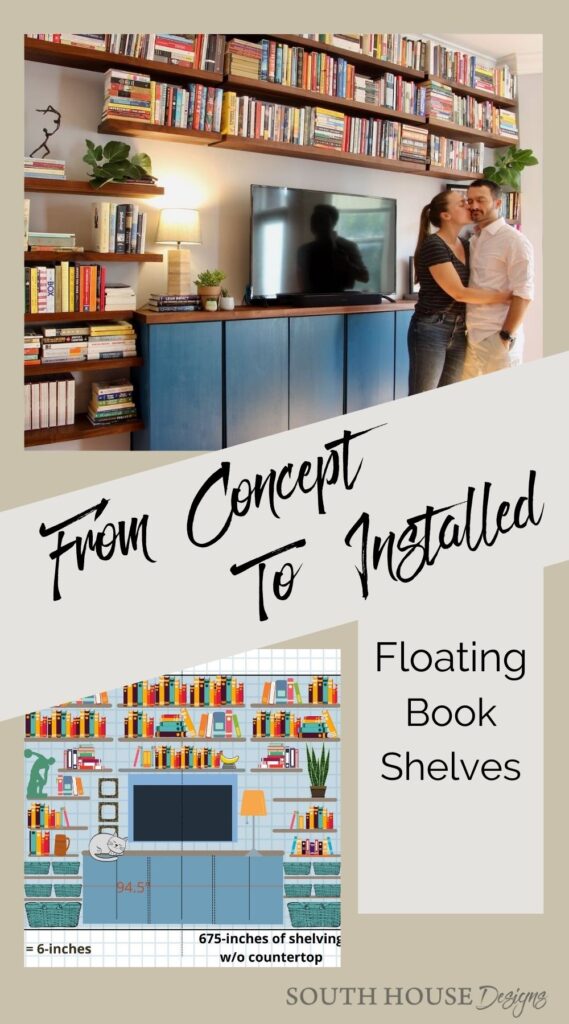
Tools and Supplies Needed:
BONUS: All the necessary tools are basic tools.
- Two ladders
- Tape measure
- Painter’s tape
- Laser level, optional but helpful
- Stud Finder
- Pencil
- Magic Eraser
- An easy to read carpenter’s square
- Drill, bits and screwdrivers
- Levels
- Anchors, these are the ones we recommend
- Wood screws
Yes, the only power tool needed is a power drill and we used two to save time switching bits. Used one as a drill and one as a driver.
A quick pause before we pick up our drills and toggle bolts: Are you enjoying this post? Please consider subscribing:
Oodles of thanks! Now on to our books.
Now To Install These Wall Mounted Bookshelves-
Initially, Katie & Jon would have liked the top three rows to just be single slabs. But not to be — just one more thing the the pandemic interfered with. We ended up loving the little breaks of air in there. But in all honesty, it made the installation a bit more stressful.
However, one long 12+ ft shelf maybe would have been too unwieldy for Katie & I straddling ladders.
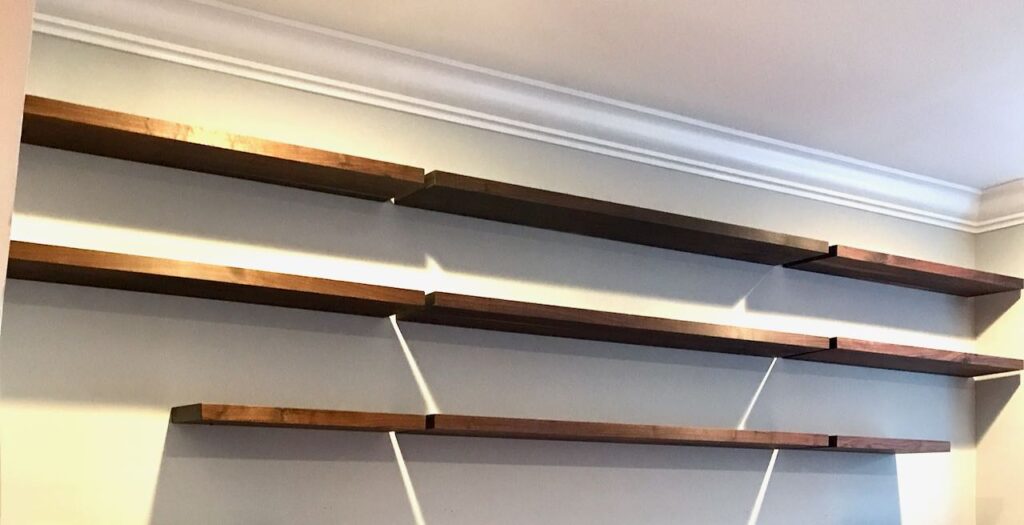
When lining up shelves that close together, it was all the more important that the heights be exactly the same, making a clean, straight line. Just the kinda thing Katie & I obsess over, so we made a good installation team while The Hubs caulked and painted the big green feature wall.
And Jon was in the midst of a large project at work, so he jumped in between marathon zoom calls to check on our progress and cheer us on.

Working from our design diagram we used painter’s tape to mark out the general placement of the cabinets, tv and each row of shelves.
Then we refined those lines and shelf placement with a laser level and tape measure.
Next using a stud finder, we tried to find and mark all the wall studs available to us.
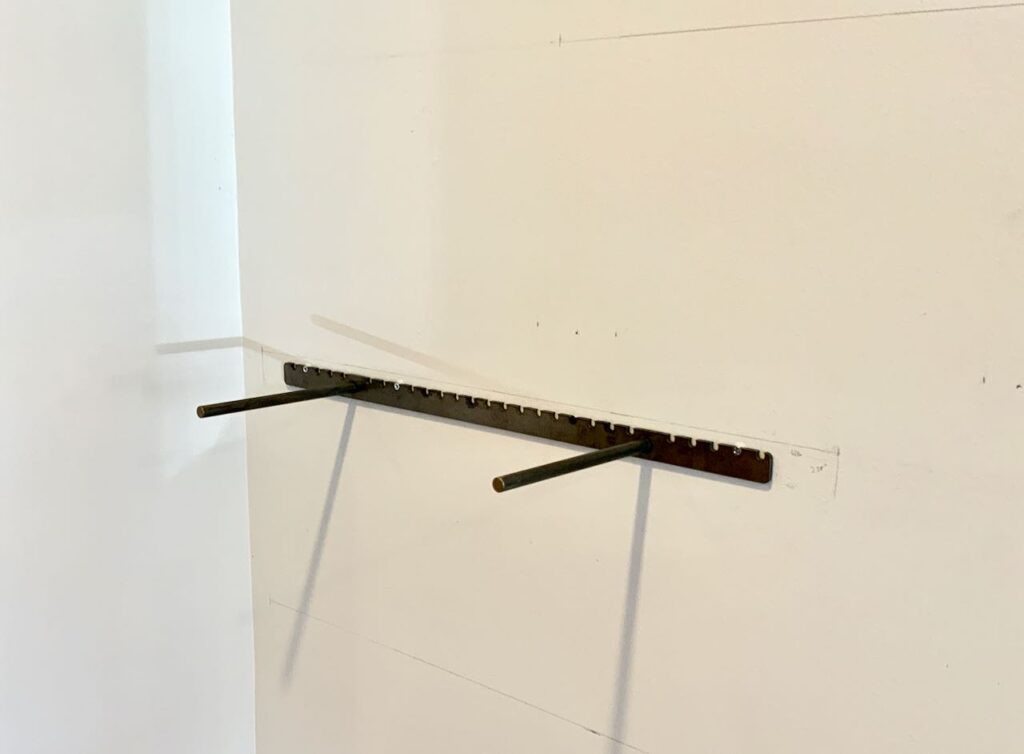
Having never done this before, we decided it would be a good idea if the first shelf was:
- a shorter shelf
- at the easiest height
The solid slab floating shelves all had their own internal brackets with either two or three (for a longer shelf) support rods.
We traced the outline of the shelf right onto the wall. Then with a lot of measuring, we determined the level of the top of the bracket and the distance from the outside edge.
We then attached the mounting bracket into at least one wall stud. With a level sitting on the bracket, we added at least two anchors, preferably another wall stud too.
With the longer shelves, we did even more.
With a lot of measuring, marking and drawing on the wall, the first bracket was up and secure.
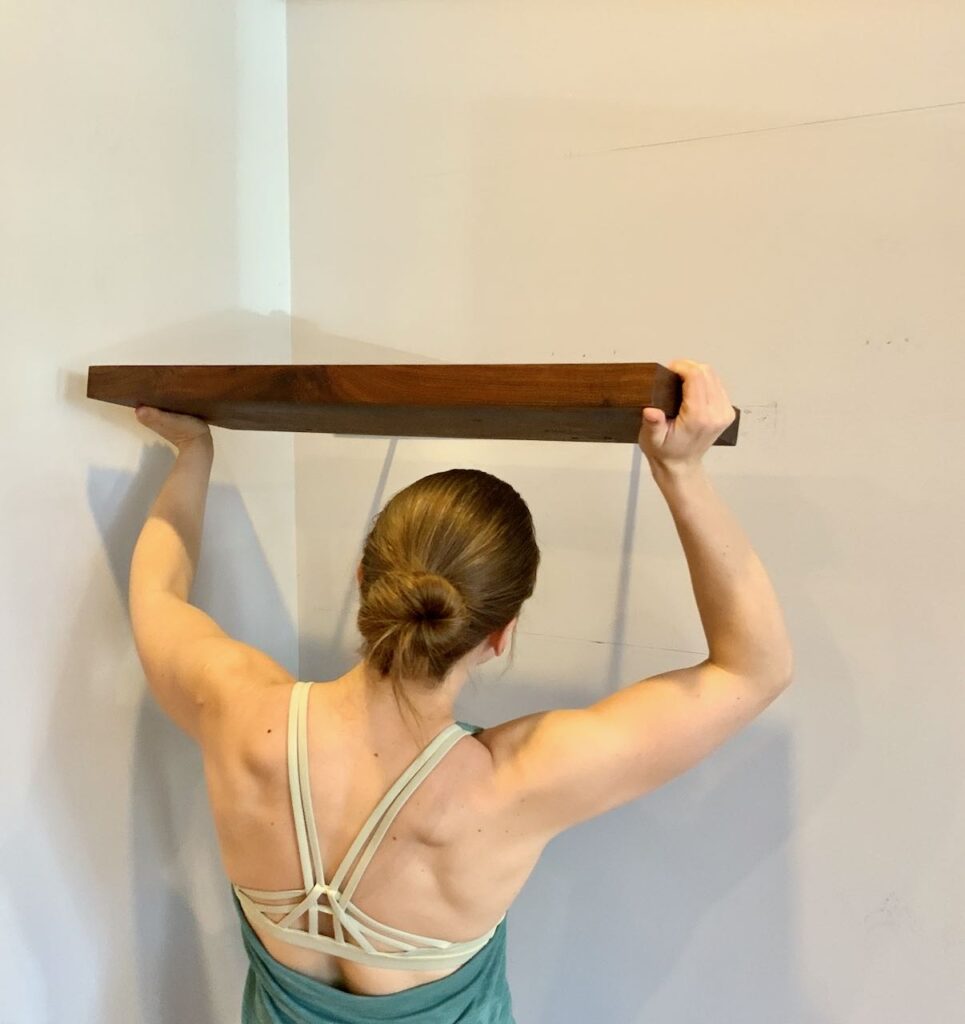
This was so gratifying when it slid on and the placement was just as we wanted.
Not shown, there are a couple of small screw holes in the underside of the shelf very close to the wall. These are where we inserted the supplied bracket set screws and tightened it against the steel rods of the frame. Perfect!
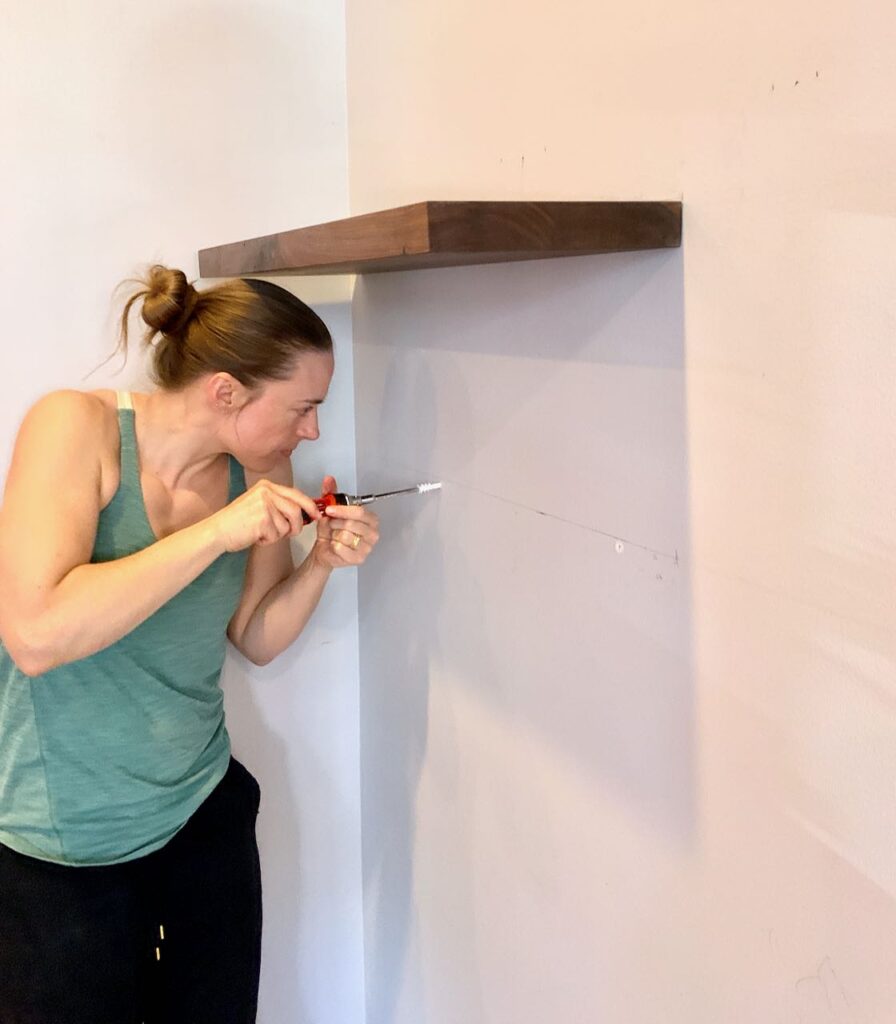
We were feeling more confident, but wanted to make sure we could align two shelves just right before we took this show up the ladders.
So next we installed the second shelf lining up right below the first. This was our opportunity to refine how we worked out the measurements to get the shelves exactly as we wanted them.
NOTE: Those wall anchors we started with, shown above, were NOT doing as well as we hoped. So we switched to a different wall anchor system that worked much better for us and these walls. These are the drywall anchors we recommend.
Remember, how much weight these shelves will be holding with loads of books.
CRITICAL: Attach to preferably two, but at least one stud, and then use additional multiple anchors!
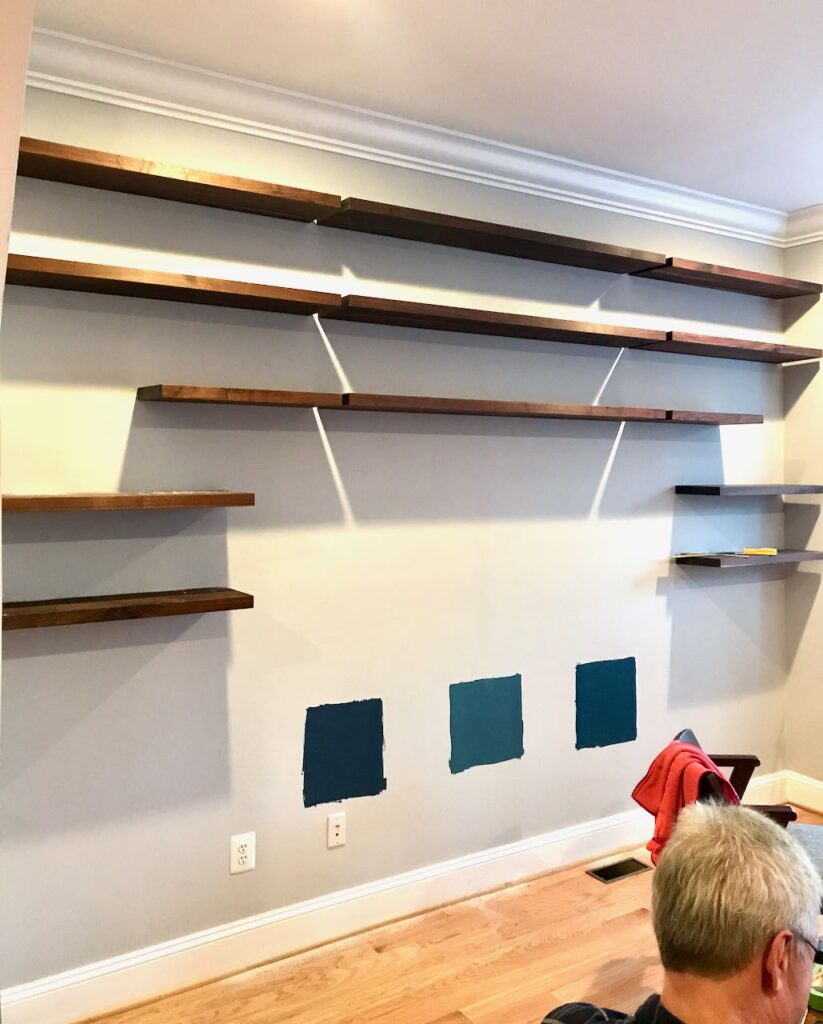
Phew, working slowly we have the thirteen hardest shelves installed. Night has fallen with six smaller ones left to go!
Those blue swatches? Sample colors of paint for the cabinets to be floating there.
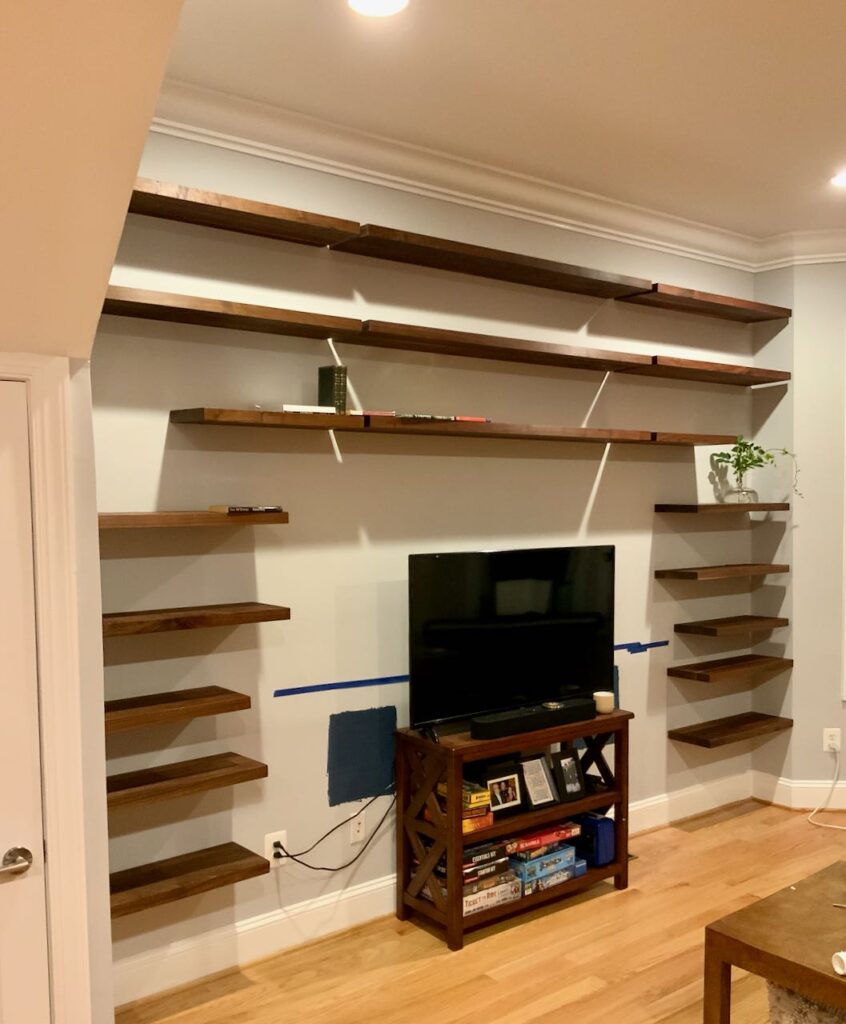
Spoiler Alert:
The cabinets finally arrived and I returned in August to install. The details of the closed storage part of this project and lots of pretty after pictures are right here.
Our work is done for this trip.
Those Ivar cabinets? They seemed to be one of the first supply chain fatalities. They were not available pretty much throughout the US at that point.
SIDENOTE: Do you notice six lonely-looking books on the shelves?
They were not really lonely, they were ceremonial! (Remember, it’s important to celebrate all of life’s victories, large and small — and this was a big one and we were ready to celebrate!!!).
Jon’s parents managed to make it into DC for our last night there. We enjoyed the first dinner party in their new dining room. Then after delicious food, wonderful wine and great conversation, we each chose a special book from their collection and had a silly ceremony of “booking” the wall. And I just couldn’t let it be without a vase of clippings from the yard.
The rest was left to them.
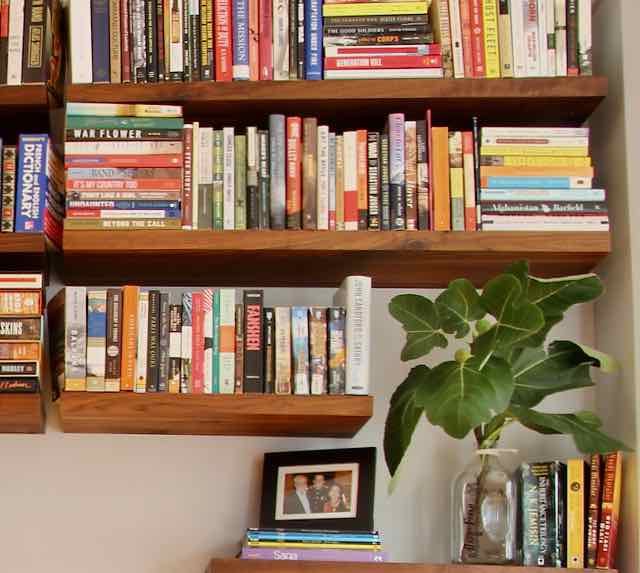
You Have Questions? I Have Answers:
Can floating shelves support books?
Yes, they can!!! But you need the right anchor system for these shelves’ ingenious steel internal support. And it’s an absolute must to find at least one stud for the smaller shelves and two or more for the longer shelves.
How deep should floating bookshelves or wall mounted bookshelves be?
For shelves meant for books (mostly), a 10-inch deep shelf works great. For function, it is best to store the books to the back of the shelf, close to the wall, But visually you don’t want the shelves sticking out too much in front of them.
With deeper shelves, the weight of the shelves themselves grows and you would have the tendency to display your books too far out from the wall which puts that much more strain on the walls.
What is the rule for floating shelves?
The “rule” for spacing between shelves is typically 11 – 17 inches. But I advise to plan your spacing around the anticipated contents of your shelves.
Oversized “coffee table” books would not be stored on these 10-inch deep shelves. So to maximize the number of rows, we went with 13-inches between each row above the cabinets. We broke it up a bit shortening one of the rows for two pockets of vertical space for plants or a statue.
Try to build in some flexibility. Such as the smaller shelves on each side of the cabinet were closer together for baskets of paper and office supplies since this became our daughter’s home office (Jon’s office is upstairs). The black square is their current TV. The blue square around it is the next larger size they would maybe opt go to when this one is needs to be replaced down the road.
How Much Weight Can Floating Shelves Hold?
Typically floating shelves can hold 50 lbs per each stud it is attached to. So if a shelf is able to reach two studs, it can hold up to 100 pounds.
And then each drywall anchor has it’s own weight rating that it will say on the label.
The anchors we ended up using and recommend are these flip toggle style and they are rated for 106 lbs in 1/2 drywall. Honestly, I would never load one that much. I think the drywall would fail before the toggle does. That’s why it is critical to attach to at least one wall stud.
It is also important to consider the shelf itself. Is it made of solid slab wood like these or is it pressboard or some other inferior wood product. I would only use solid wood.
Don’t hesitate to reach out to me with any additional questions.
At the time, this was the largest of the diy projects we had undertaken. We, and the kids are thrilled with the end result!
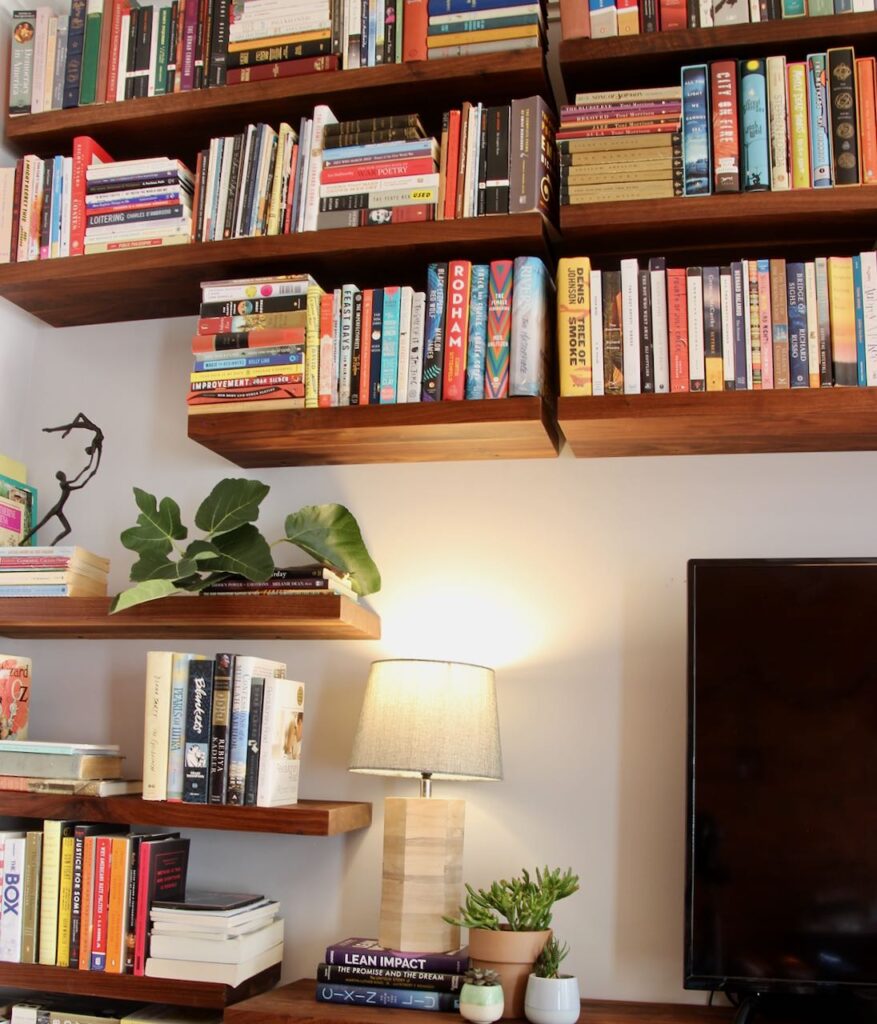
This was a great way, perhaps the best way, to make this house truly Katie and Jon’s home, infused with their personalities. It’s now their sanctuary (but not a quiet sanctuary) filled with boisterous laughter, loads of music and enough towering piles of books to satisfy their incredibly bright and curious minds!
Don’t forget to jump over here to see how we adapted the Ivar cabinets to be deeper for some of those oversized books, board games and more! Plus you might want to check out how Canva played a major role in the dining room accent wall.
Don’t hesitate to reach out to me with any additional questions.

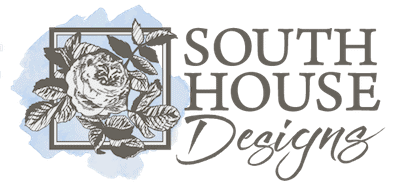




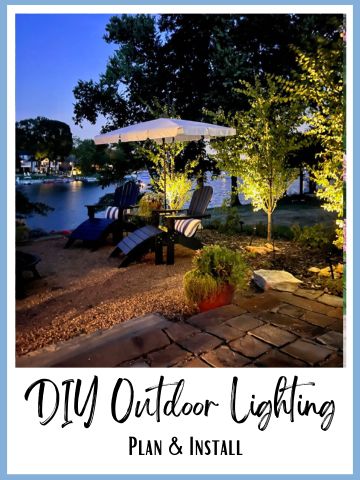
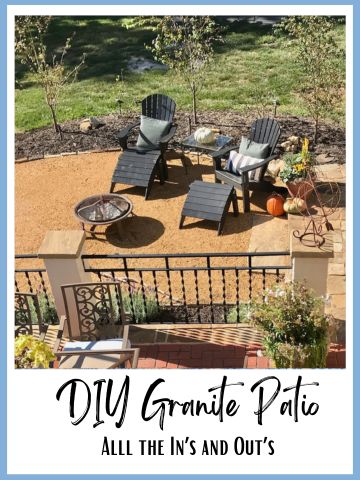

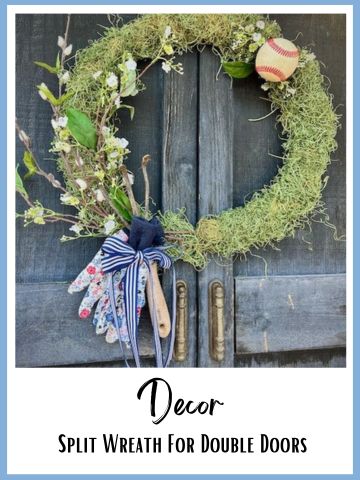
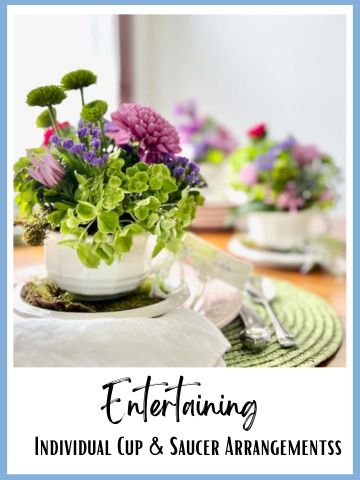
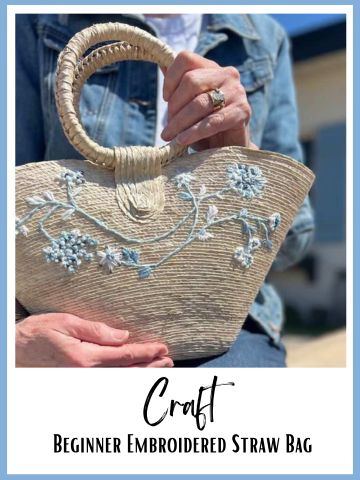

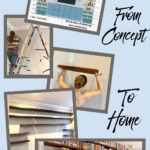

Great post!! The floating shelves look fantastic!!
Thanks so much Kim! We –and the kids– are thrilled with how it turned out.
What a great project! I love the end result.
Thanks Paula! It was a great project and it turned out amazing. (thank goodness!)
Hi, Kim. Looks great! Just to clarify: are the steel rod/bracket things that come with the shelves not strong enough to hold books, so you had to change or supplement the bracket system? I’m considering ordering from the same company you used, to store all books. I want to be sure the design is adequate as sold, or bd clear on what else woukd need to be done. Thank you!!
Hi Toni,
Just to clarify, the steel rods, the infrastructure of the shelves are great. Where we had difficulty was with our daughter’s old plaster walls and the anchors that the Etsy shop recommended. We felt like they weren’t gping to be strong enough, so we substituted these Toggle Anchor bolts: https://shopstyle.it/l/bZqGL.
We love the shelves!!! Just make sure at each shelf is attached in at least one if not two studs.
Don’t hesitate with any other questions. I’m here to help!!!
Wow, what a transformation, well done!
Thanks so much Rachel. The fun ones are the ones that actually turn out just as, or maybe even a tad bit better than, what you had in your head. And this is one of those!
Looks wonderful! Those row houses in DC have so much potential. Know tthey are enjoying living there.
Thanks Linda! They LOVE it — as do I. Great place to visit!!!
Fantastic project and the end result is so pretty
Oh thanks Cindy. I love it too, but more importantly, the kids LOVE it!
Thanks Cindy! It turned our better than I even dared to hope for.
What a great project – and I love how you planned it.
Thanks bunches!
I am constantly amazed at the quirky ways I have used Canva.
Spectacular before and after! These turned out great!
Thanks AnneMarie! It is one of those projects that turned out perhaps even better that we hoped for.
Great job. Your wall looks wonderful. When will you be coming to install one for me?
Those shelves are amazing Diane! The look is so stunning – I’m sure the sweet couple appreciated all of your hard work! Pinned 🙂
Thanks Cindy! Yes, they do.
Amazing! The books are stored, accessible and decor all in one! How lucky the kids are to have such talented parents to help them turn their house into a home!
Thanks so much Kim! That’s very sweet of you to say.
What a wonderful way to make a focal wall!
Thanks Joanne! I really wasn’t sure how this would play out when the kids started describing their vision, but couldn’t come up with any pictures for inspiration. So yes, I am thrilled that is turned out so well. They have their wall covered in their “Book Art”.
What a great project! The wall looks so beautifully organized! Thank you for sharing for Tuesday Turn About!
This project is stunning! All the work and the little details to get these made just sings to my geeky designer heart. Especially the Canva designs. I need to up my game on that even more. Thanks so much for sharing it and I will be returning to see even more. This post will be a feature this week on #HomeMattersParty
Donna, you are so kind! Isn’t Canva the best!!! I love pushing it to its limits and seeing all the crazy ways I can use it. It must speak to my puzzle nerd side.
Thanks so very much for the feature! I truly appreciate it.
That is absolutely wonderful! I love it. You are a great mom! I’ll be featuring this today at the TFT party. Congrats! 🙂
It is my joy to help the kids realize their vision. Katie & I have always enjoyed project-ing together.
Oh thanks so very much Pam. I truly appreciate the feature!!!
I love floating shelves, clean and sleek. Great job! Thanks for sharing how to install it. #Home Matters Party
Diane, thanks ever so much for the great, instructive post! One of my adult sons lives in Manhattan with limited space for a giant bookcase, but has a lot of books, knick knacks, framed pix, etc. he’d like to display. What he does have is 12 foot ceilings so he can go vertical! Gonna share this with him. PInned!
Great! Let me know if you have any questions! Happy to help.
do you have a problem the shelf tilted forward? I install my bookshelf with L brackets and they tilted forward.
Oh Judy, I’m so sorry to hear that. Ours did not use L-brackets. They came with their own steel frame with either 2 or 3 (depending on length of the shelf) thick prongs. You install the frame on the wall using heavy duty anchors or into studs and then slide the shelf onto this frame that disappears into the shelf and tighten it with little hidden screws. We had one of the smaller shelves tilt forward, but that is because there was not a single bolt into a stud and the two bolts we used were installed using the first anchor system we tried. So we called that novice operator error. We now know better. Always at least one screw into a stud and the highest grade anchor for the rest.
I love the look of this project, and I’m actually trying something similar myself. Do you have some of the other versions you made on Canva of the bookcase that I might be able to look at for ideas?
Hi Jackie, I sure do, let me dig those up and I’ll send them to your email.
This is really incredible, and beautiful! My husband wants to add custom shelving in various parts of our new home for his collection of books – those that we don’t have room for in the bedroom designated to be the ‘library’. I have not been loving the idea until I saw your wall of books. It really looks so polished.
The shelves were made by someone on Etsy? I’d be interested in reading any further posts you made about the project planning, installation, etc.
I see your first image of the “Background” must have been taken in “MY” room. Now I don’t feel so bad, seeing another person with boxes and boxes of books, and no home for them. I’m so thrilled that I found your article here. I absolutely NEED all my books, but I didn’t want to clutter my apartment with a bunch of bookshelves.
This look is so beautiful, clean, and it doesn’t take up room. Thanks again for sharing your “journey.”
Oh, Bella, I’m thhrilled to be able to inspire a stylish solution for you. Glad you were here and
hope to see you again real soon
Love these shelves! I have long wanted such a look for a tall wall in my staircase. Thank you for posting!
I’m so glad it is inspiring you! The kids love it!!!! It’s the showpiece of their home and perfectly reflects their personalities.